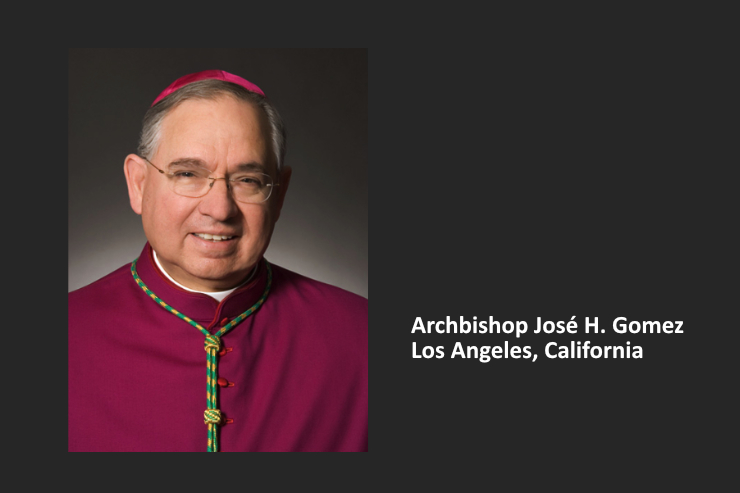
Blessed Paul VI
On July 25, the Church marks the fiftieth anniversary of the most reviled and rejected magisterial document of all time. Many papal encyclicals remain unread, others are perused and ignored, but Pope Paul VI’s Humanae Vitae was pervasively condemned and opposed. This antipathy came not only from predictable sources, like radical secularists, sexual revolutionaries and anti-Catholic Christians, but also from remarkably atypical ones, such as various Catholic bishops, priests, religious, theologians, and otherwise observant married couples.
Since its publication, surveys have shown that over ninety percent of Catholic spouses at some point in their marriage have contravened its moral summons and that most consider its teaching on the immorality of the use of contraception in marriage erroneous. Opposition to it ushered in an age of dissent, both open and private, since if the Church can be wrong in teaching about marital morality, then how can its teaching be trusted in other areas? And the hostile reaction to it has led, among other things, to a severe enfeeblement of the teaching office of the Church, as many clergy, theologians and catechists, called to preach the Gospel in and out of season, have remained mute, refusing out of embarrassment, fear of opposition, or pusillanimity masquerading as prudence, to acknowledge its existence, not to mention faithfully transmit its teaching.
So why does the Church celebrate its Golden Jubilee?
Because the teaching of Humanae Vitae is nevertheless unmistakably true. Its message, at the dawn of the Sexual Revolution, was both heroic and prophetic. As its predictions of what widespread contraceptive use would lead to become sadly and conspicuously validated — marital infidelity, general lowering of moral standards, the objectification and instrumentalization of women, the coercive use of it by public authorities — and as other negative consequences that were not mentioned but flow from a contraceptive mentality and lifestyle metastasize — promiscuity, divorce, out of wedlock conception, abortion, sexually transmitted diseases, in vitro fertilization, cloning, embryonic experimentation and destruction, widespread under-population, the acceptance of same-sex sexual activity and ultimately the redefinition of marriage according to a non-procreative ideal — honest observers are increasingly admitting that Paul VI was right about both effects and cause.
Truth in general is often unpopular and rejected. Most of the Old Testament prophets experienced severe rejection, many were persecuted and some were executed. It was only later, once the people had experienced the consequences of persevering in sinful behavior, that their words were acknowledged as coming from God, accepted, and put into practice. Jesus himself experienced rejection in Nazareth and in Jerusalem, including from religious leaders who conspired with the Romans to kill him. Even among his disciples in every age, most dissent in practice from his more challenging teachings, like loving one’s enemies, picking up their Cross daily, forgiving seventy times seven, living the Beatitudes, and treating everyone in need as if we were caring for him personally. And we see the popular rejection of the truth throughout Church history. Saint Jerome wrote during the fourth century, “The whole world awoke with a groan to find itself Arian,” because so many Christian faithful and clergy had accepted the heresy that Christ was really a creature, not God.
Truth, however, is not determined by polls of popularity.
Pope Paul VI anticipated opposition to Humanae Vitae. “Perhaps not everyone will easily accept this particular teaching,” he wrote, but added that the Church cannot “evade the duty imposed on her of proclaiming humbly but firmly the entire moral law, both natural and evangelical.” He said that the Church, “no less than her divine Founder, is destined to be a ‘sign of contradiction.’” And in the last century, there is no way that the Church has been a greater sign of contradiction than with regard to Paul VI’s and the Church’s efforts to keep conjugal love loving and open to the love and will of God.
To regard the Church’s teaching on contraception, however, fundamentally as a “sign of contradiction” is to do it an injustice, because it is not principally a negative retort to Playboy, pills and prophylatics, but a positive articulation of the goodness of human love in the divine plan. The fiftieth anniversary of Humanae Vitae is a chance for the Church to ponder that Gospel anew and commit herself to understand it better, live it, and proclaim it.
At the same time, the Golden Jubilee is an occasion for an honest examination of how we’ve received the gift of the truth contained in Humanae Vitae, confess where we’ve failed, and make a firm amendment ecclesially and individually to live and announce its sanctifying message better.
We can consider several areas of needed improvement.
First, we must do a better job on proposing moral alternatives to contraception. Paul VI noted that there are serious physical, economic, psychological and social reasons why a couple might determine that conceiving a child at the present time would be imprudent. Many think, however, that contraception and complete abstinence are the only options. That’s why teaching fertility awareness methods in accordance with the extraordinary growth in scientific knowledge since the “rhythm method” of the 60s is so important. Not only do fertility awareness methods promote respect for women, increase spousal communication and dramatically decrease divorce rates, but the knowledge they provide are among a couple’s greatest aids when they hope to conceive. Every engaged couple should receive this training free from parishes and dioceses. It should also be a standard offering in a parish’s accompaniment of families as well as part of the remote sacramental marriage preparation in every religious education program. Failure to do so is a spiritual malpractice that only abets the contraceptive culture.
Second, we must assist couples to involve God in their approach to sex and children. Making love is meant to express in body language what a couple says verbally before the altar, that they give themselves wholly and receive the other just as God made them, without rejecting their built in capacities to become a mom or dad in the very act God made for those capacities to be expressed. Many couples unfortunately put up in their bedrooms a virtual “No entry” sign to God, eliminating the procreative significance from their love-making and thereby effectively evicting the Creator. Many couples, moreover, make “planning” decisions about family size without prayerfully consulting God. This Jubilee is an opportunity to assist them to unite all aspects of their married life to God.
Third, we must honor and thank those couples who have faithfully sought to live by the teaching of the Church without much support and encouragement from fellow couples, their parishes and the wider Church. Whether by generously raising up a large family of disciples or having recourse to moral means when their circumstances do not permit it, many are true heroes of faith whose example should be put on a lampstand.
Fourth, we must overcome our shame in preaching the challenging parts of the faith. Many clergy and married couples treat the teaching of Humanae Vitae as “bad news” rather than Good and clam up out of embarrassment. St. Paul experienced similar shame early in his apostolate with regard to the Cross, but eventually the reality of Jesus’ crucifixion and the need to be “crucified with Christ” became his boast. He would urge us, like he urged the first Christians, not to be ashamed of the Gospel. The teaching of Humanae Vitae is not a peripheral or optional part of the Catholic faith, because essential to our faith is loving God and loving neighbor, and neither God nor one’s spouse is sincerely loved through the sins involved in contraception. The Church needs to proclaim that love with apostolic boldness all the more at a time when many treat lust as a god and when the sexual revolution catalyzed by contraception has left so many hurt and culture ailing.
Fifth, we must strengthen the teaching of Humanae Vitae by communicating its substance in ever fresh and adequate ways. This is what Pope John Paul II sought to do. While absolutely agreeing with its conclusions, John Paul thought that Paul VI’s natural law analysis of the “conjugal act” was not the most effective means to communicate the “why” behind the “what” of the Church’s teaching. For a subjectivist, emotivist age, he didn’t think an objectivistic analysis of spousal actions, however coherent, would be widely convincing. Philosophically, he sketched out a personalistic, anthropological analysis of what the use of contraception does to men, women and their attitudes toward children, the truth of which readers could verify on the basis of personal experience. Theologically, especially through his famous Catecheses on the “theology of the body,” he sought to ground the teaching on contraception in the light of Sacred Scripture, which he was convinced would be more persuasive to people of faith than objectivistic natural law argumentation. Communicating the faith always involves seeking the best methods to convey unchangeable teaching in changing times. The fiftieth anniversary of Humanae Vitae is an opportunity for evangelically faithful creativity.
The history of the Church has shown that the reforms of popes, ecumenical councils, and new religious orders often take decades to take root and be appreciated. Sometimes the words of prophets, moreover, are valued only after people have suffered because of a failure to heed them. Humanae Vitae’s fiftieth anniversary is a time to read it with renewed eyes, and to pray that its prophetic teaching on the blessing of marital love in God’s plan — and the affliction that can’t be avoided when that gift is treated as a curse — will be listened to anew and responded to with humble and courageous faith.
Editor’s Note: Father Landry’s article originally appeared in The Anchor, the weekly newspaper of the Diocese of Fall River, Mass, on July 27, 2018 and appears here with his permission.













